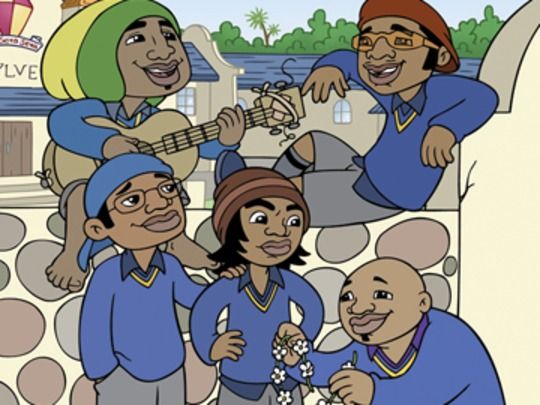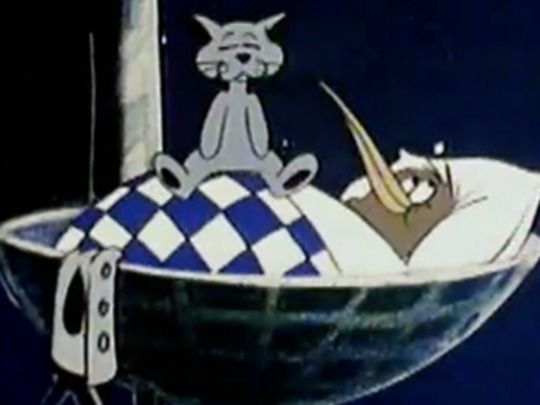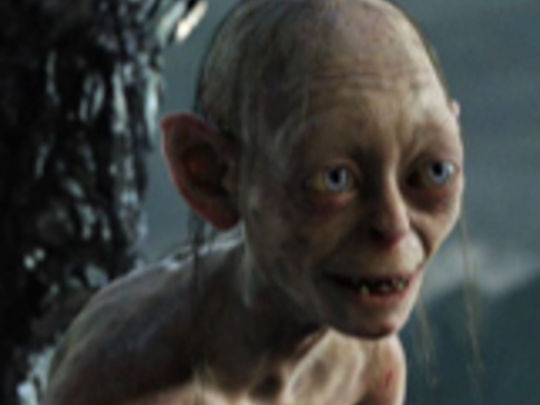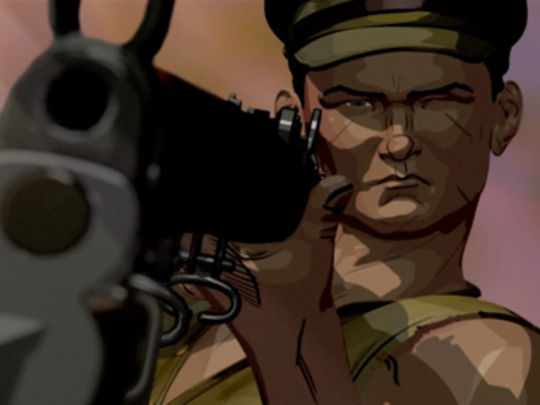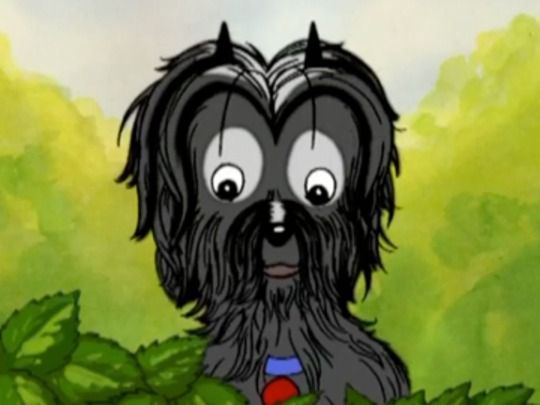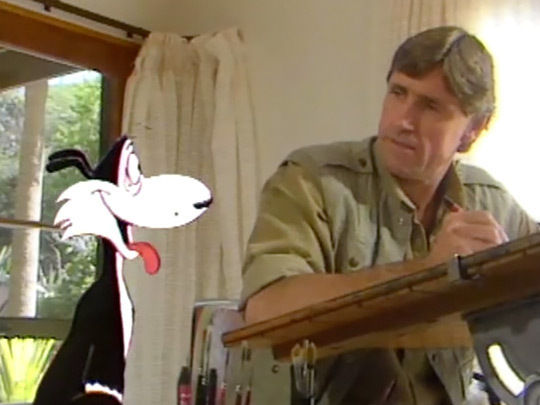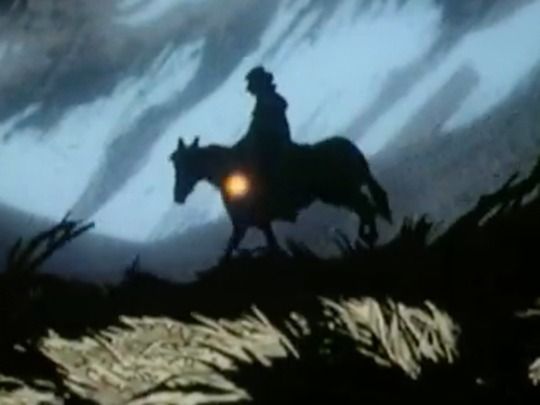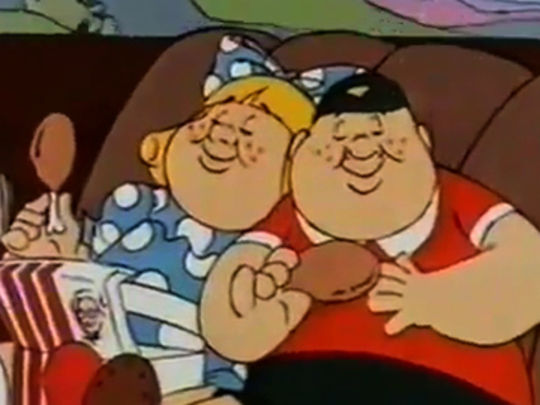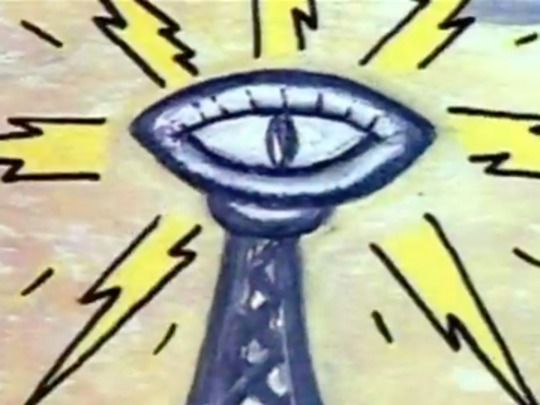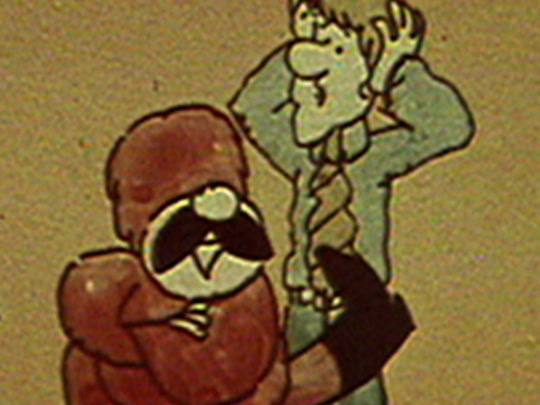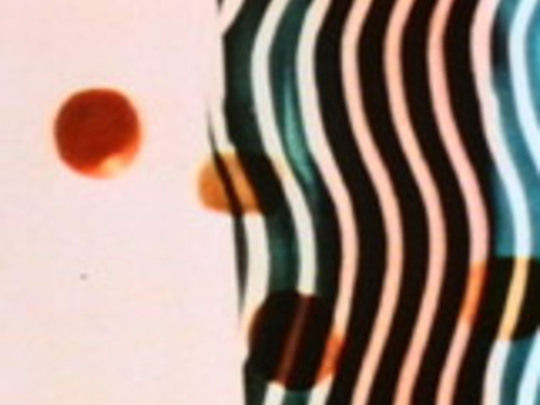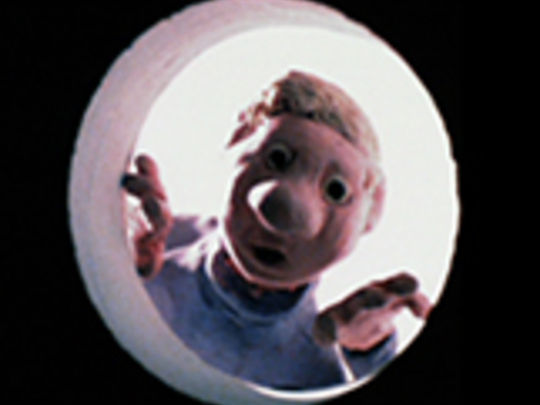The Animation Collection
Kiwi Animation
What do these scenes have in common? Dog from Footrot Flats, floating on a raft while having a fist fight with an ugly crocopig; a sheep discussing when he’s scheduled to have his next poo; an emaciated creature, arguing with himself over whether he’s a liar and a thief.
The answer is animation. The very different looks of Footrot Flats: The Dog’s Tale, the laconic sheep in The Pen and Gollum in The Lord of the Rings point to animation’s big advantage: it offers so many options for painting the world in different ways.
This collection of animation is all about freedom — the freedom to create crazy, colourful and individual visions; the freedom to conjure characters and a distinctive look from a blue and white porcelain plate, a bad-tempered Easter Bunny, or a group of Polynesian school kids.
Sifting through the pickings while making our selection, the concentrated richness of Aotearoa’s animated heritage became clear. Though Kiwi animation proves thin on the ground up until the 1970s, the number of creatures and oddball visions begins to expand swiftly from the mid 70s onwards.
There are many ways to navigate your way through this collection: following your nose is surely as good a way as any. But here are some broad categories and possible highlights.
Thinking big
One of animation’s attractions is surely the chance to create grandiose visions, without being hamstrung by the practicalities of building monster costumes and feeding the cast.
In the 1980s, small teams of Kiwi animators began to make themselves heard. Some of the teams were small indeed. Screen taonga Bob Stenhouse created many of his images alone, with films like The Orchard and the Oscar-nominated Frog, the Dog and the Devil. Stenhouse sometimes ran an image through the camera dozens of times to achieve his rich, luminous look.
Popeye fan Joe Wylie spent years working on cheap animated TV in Sydney, before pulling off a trio of distinctive projects back home. Wylie’s love of B movies is clear on Toy Love music video Bride of Frankenstein, and crackpot mutation tale The Nightwatchman (co-directed with John Robertson). But 1984’s Te Rerenga Wairua may be his most fondly remembered. Replete with a 2001-style finale scored to The Clean, the short follows the wairua (life force) of a car accident victim, on their last journey to Cape Rēinga.
Fully-animated features and TV shows were a rare sight in New Zealand until after the millennium. Even Footrot Flats, adaptated from a highly successful comic strip, took a number of years to attract finance. Another 29 would roll by before our next animated feature. Due in 2016, Gallipoli drama 25 April marks the first time a feature has been animated and originated in New Zealand (Footrot was animated in Australia).
bro’Town became another landmark, as the first local animated series playing in primetime. Five (short) seasons provided welcome additions of un-PC humour and the colour brown.
Len Lye and advertising
The first Kiwi animator made his mark overseas. Born in Christchurch in 1901, Len Lye explored his interest in movement through various shorts; although nominally a promotional film, A Colour Box (1935) caused such a sensation some cinemas actually paid to rent it. With 1939’s music-inspired Swinging the Lambeth Walk, Lye once again scratched and painted images directly onto celluloid.
Advertising has long been a prime market for the visual possibilities offered by animation. The birth of local TV in the 1960s set things rolling for a number of small animation companies. Levin’s Morrow Productions was one of the first. Having animated a Māori warrior for the opening of this 1962 National Film Unit short, Morrow later won the high profile campaign for the changeover to decimal currency.
Another advert is a prime contender for New Zealand’s most influential piece of animation. Although on-screen sparingly, it has been argued that these Dancing Cossacks helped win National the 1975 election, after an ad campaign that tainted Labour’s superannuation scheme a Communist red.
Cynics might argue that music videos are advertising too. A number of the more inviting ones are in this collection, plus a couple of Chris Knox’s deliberately rough and ready experiments in animation and stop motion.
For the children
Without children (and adverts), animation would surely have died long ago. The late great Euan Frizzell is a key name here. His adaptations of Lynley Dodd dog tale Hairy Maclary sold like hotcakes in the 90s. His Margaret Mahy-inspired Great White Man-Eating Shark won international awards.
Later Luke Nola tried a grungier approach, after realising that revolting germs voiced by Jemaine Clement and Taika Waititi could be a perfect way to educate children about the human body, without them knowing. Germs also make a mark in Staines Down Drains, one of a number of children's shows from Brent Chambers' Flux Animation.
And let’s not forget this magical minute from Sam Harvey, which children should really not have been awake for.
Stop motion
Back in the 50s, Dunedin-based Fred O’Neill used earnings from his electroplating business to animate creatures out of plasticine. The NFU took notice and funded four shorts, including rocket to Venus tale Space Flight (1962), which includes scenes of cigarette trees and aliens with chimneys on their heads. Health Department officials were possibly too overcome to spread the anti-smoking message widely — despite commissioning the film, they did not give it wide release.
Later there were these hilariously deadpan sheep, a pair of socially inept rabbits, and a number of stop motion experiments in Peter Jackson's basement. Then Jackson discovered what computers could do...
Computers
Jurassic Park (1993) is often used to mark the line where computers began transforming special effects. John Sheils spent a number of years straining the limits of a fairly basic Cubicom computer to make Red Scream: New Zealand’s first CGI film plays like a madcap Warner Brothers cartoon turned nightmare. Five years later James Cunningham was invited to the Cannes Film Festival with Infection, a heist tale in which the robber is a walking hand. Cunningham has gone on to oversee a host of award-winning films made with his students at Auckland’s Media Design School.
Meanwhile on television, children’s shows Squirt and The Simon Eliot Show stretched available technologies to have animated characters interacting with real people — in real time! Naturally a little final polishing was sometimes needed after filming.
There have been other noteworthy developments. Peter Jackson and the Weta Digital team won respect — and Oscars — for creating photo-realistic characters like Gollum, and King Kong. Since then Weta crew members have invented innovative programmes for building virtual hair and tissue. Sounds a little Frankenstein-like, but very useful.
The desire to stop this collection crushing every creature in its path has meant limiting animators to a couple of entries at most. Press on these names to see more from Bob Stenhouse, Brent Chambers, local documation kings the Simmonds Brothers, Chris Knox, and the musical Fatcat and Fishface.
- Ian Pryor is web editor at NZ On Screen. One of his earliest screen memories is of Pinocchio inside a whale.
